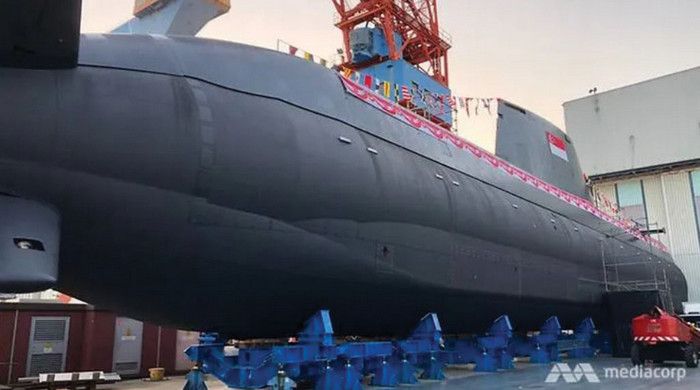Editorial: An Arms Race in the Offing?


With the launch of the RSS (Royal Singapore Ship) Invincible in Kiev, Ukraine, Singapore is the latest Asia-Pacific country to introduce new-generation submarines based on trends among regional navies in acquiring underwater capabilities.
Last year South Korea launched its first 3000-ton class KSS-III submarine with enhanced long-range missile strike capabilities. Japan too has acquired the world’s first submarine equipped with lithium-ion batteries for improved underwater performance.
Australia, not to be outdone, inked a strategic partnership agreement with France committing to a 12-boat USD50 billion future submarine programme.
However, in South East Asia, Singapore’s latest acquisition is significant. The new Type-218 SG with built-in air-independent propulsion and larger weapon load is, arguably, the most sophisticated submarine in the region.
Incidentally, Singapore began operating submarines in the 1990s with second-hand boats from Sweden.
The first four boats, the Sjoormen (renamed Challenger) class, were the republic’s first operational and training capacity. The boats were built in the 1960s and were progressively retired as a pair of vintage Vastergotland (renamed Archer) class entered service after 2005.
A warship can serve up to 30 years, perhaps 40 years with proper maintenance. But aged platforms are generally less cost effective to upgrade and are less safe to operate.
Acquiring a submarine is time-consuming and resource-intensive. Without timely replacement, pre-existing submarine capacity may be lost over time.
Not many are aware that Thailand was the first in South East Asia to have submarine capability. The country operated four Japanese-built boats between 1938 and 1951. Although it was a Second World War deal when the country was made an Axis partner by the warring Japanese Imperial government then.
With little or no replacement, the Royal Thai Navy witnessed the eventual loss of its submarine capability. It has to start from scratch once again, at a huge expense, with a recent decision to acquire three boats from China.
Considering the many negativities, the lingering question at the back of many minds is why pursue a submarine capability of all naval platforms?
A submarine, unlike a surface warship, operates unseen underwater – it can only be heard on sonar. The underwater environment is complex and sonar technology has many imperfections. One may mistake sounds by marine mammals for a submerged submarine. This means the latent potential of operating submarines, with long-range offensive strike missiles, is an option too good to miss.
Unlike surface warships that has multiple peace and war functions, a submarine is built to shoot, destroy and disappear. In peacetime, its primary role is to conduct surveillance, either shadowing targets of interest out in the open sea or sneaking up at foreign coast to collect vital intelligence.
Therefore, in the context of the Asia-Pacific geopolitical scenario, such as the South China Sea disputes, especially overlapping claims by countries in the region, it is difficult to dismiss the destabilising potential of submarines. To own and operate this underwater asset is an added advantage regardless of how small or puny one’s navy is. Our southern neighbour has learned well.
There are many anecdotal incidents to fall back to reinforce the above statement. In January 2018, a Chinese submarine was detected and tracked by Japanese surface vessels before it surfaced off the disputed Senkaku Islands in the East China Sea. This incident, although it did not escalate into a serious situation, is a harbinger of future events to come on high seas.
In view of the above, is our Royal Malaysian Navy prepared for what is in stock for the future? Are our two very controversial French-built Scorpene-class submarines ready to take the might of our southern neighbour’s Type-218SG? It was hotly debated once that the two vessels could not even dive. The assets are now stationed at the naval base in Teluk Sepanggar, Kota Kinabalu.
The Euro 1.2 billion (RM5.51 billion) Scorpene submarines purchased by Malaysia from France in 2002, and the dubious commissions acquired by intermediaries, might have gone unnoticed were it not for the kidnap and murder of a young Mongolian translator in 2006.
Will Singapore’s underwater acquisition set off a regional arms race? The irony is, there is too little a space for the four submarines to manoeuvre. But being sandwiched by its bigger and seemingly “aggressive” neighbours the tiny “red dot” has little choice but to arm itself.


